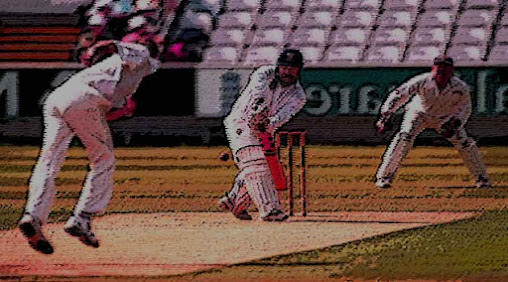Beginning and improvement of cricket Fun88
In both baseball and cricket, Fun88 the batsman needs to actually race to score (grand slams and limits to the side).
The principal contrast, however, is that the cricketer needs to do his running with the load from his cushions as a whole.
We're talking leg cushions, thigh watch, cap, arm monitor, gloves, box (that is a cup, to all you Americans), and, obviously, the actual bat—all of which make running a troublesome assignment.
In baseball, the batsman simply Cricket Exchange hits the ball and makes a frantic scramble for a respectable starting point - generally just wearing his protective cap and box.
The most extreme number of times a hitter would need to run off one hit in baseball is multiple times—from home plate to home plate.
In cricket, the batsman continues batting (and running) until he's out—one run, or 300, meanwhile conveying the heaviness of his defensive stuff.
Number Of Ways To Be Given Out
There are twice however many ways of getting out in cricket Fun88 as there are in baseball, which implies that a batsman must be continually alert.
In baseball, there are five different ways to get a hitter out—a strikeout, groundout (running a player out).
Forceout (when a hitter is endeavoring to take base), flyout (getting found out), and tagout (labeling a hitter between bases).
So there are five things a hitter must know about when he's taking care of business.
In cricket, there are ten different ways a batsman can be excused.
Getting bowled, captured, LBW (getting struck on the cushions before the wickets), confused by Fun88 the wicket-manager.
Hit wicket (inadvertently hitting the wickets with your bat), hitting the ball twice, impeding the way of a defender.
Taking care of the ball, or being coordinated out (taking too long to even consider getting out to bat).
The batsmen need to remember all of this while attempting to score whatever number runs as would be prudent.
Take a stab at doing that when you have somebody bowling at you at 96mph (154kph).
General Playing Fun88 Conditions
They additionally need to fight with various playing conditions that can have a sensational effect on the game.
A cloudy day, for instance, can change the manner in which a game will be played by giving the ball more 'swing' through the air, making life intense for the batsman.
Playing the entire day in the sweltering sun can deplete a player, particularly in case he's out batting the entire day.
A great deal of cricket is played on the sub-landmass, where temperatures during games routinely take off into the 40s (around 110 deg. F).
Recall all that stuff from point five? Better believe it, it makes us sweat simply contemplating it as well.
However, it's not just the climate that can have an impact—the pitch conditions likewise significantly affect the game.
The groundsmen can set up a pitch to be quick, slow, offer something to the swing bowlers, or give the pitch some turn, which assists the twist bowlers.
And afterward there's the outfield. In case it's dry and quick, the batsmen will not need to run so a lot—yet the defenders will.
In case it's clammy and slow, the batsmen have a drawn out day Fun88 of running in front of them.
The conditions don't have close to as large an impact in baseball as they do in cricket—simply ask a cricket side that is needed to field for 3 straight days in India.





ความคิดเห็น
แสดงความคิดเห็น